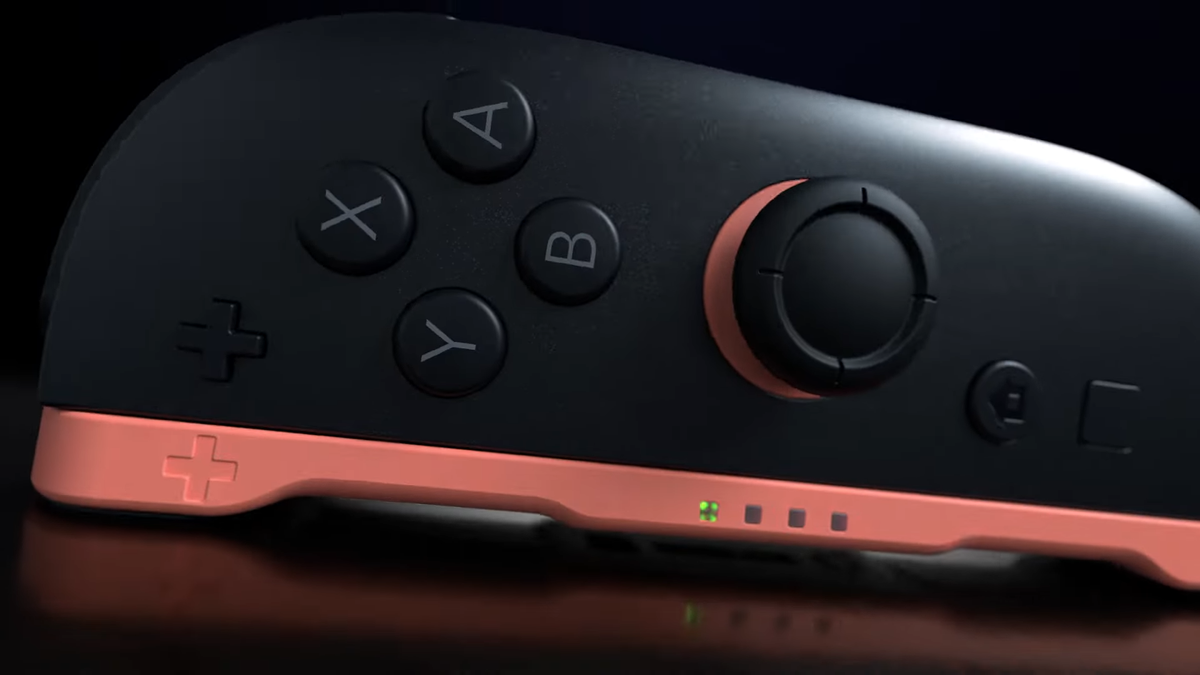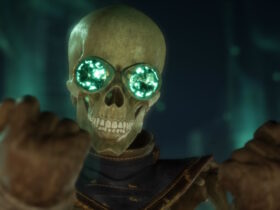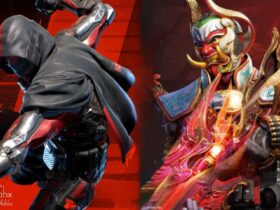I completely missed it the first time I saw the Nintendo Switch 2 reveal trailer yesterday. The only hint at a new innovation for Ninty’s second-generation device was on the screen for roughly four seconds, and I missed it. On my first adrenaline-fuelled viewing, I was a little disappointed that the Nintendo Switch 2 didn’t have a new trick up its sleeve. The next hour is a blur of gathering every scrap of detail I could from that 2:22 long clip (ohhh, I get it), but thankfully that meant countless re-watches. And as soon as I scrubbed back through the controller section, it clicked.
The use of a relocated sensor on the top of the Nintendo Switch 2 Joy-Con has been widely rumored for a few weeks now, with many positing that the controller could be used as a separate gaming mouse system – a la the Lenovo Legion Go. I was skeptical, but willing to bow to the rumors once those Joy-Con were sliding across the surface in front of my very eyes. Ninty lingered on this shot, imploring us to take note – and I was elated.
With all the design rumors pointing to a device that looked and functioned very similarly to the original Nintendo Switch, I was worried the system would lose its edge in its 2025 iteration. There are a lot more gaming handhelds on the scene now, and Ninty needed a move. On release, the Switch was a revolution – a handheld that could convert into a full home console while still offering motion controls, an IR sensor, and HD rumble features in its controllers. There’s just one problem with that. I use my Switch pretty much exclusively in handheld mode, and I’ve only ever used the IR sensor in Ring Fit Adventure. Very few games have made the most of the device’s full feature set – and so, neither have I. Even my recent Mario Party Jamboree exploits have all been limited to non-motion mini-games because one member of our group uses a third-party controller.
Nintendo is a software-first company – that’s why it doesn’t need the most powerful internals. But in a different way, it also leads with its hardware. Every Nintendo system has innovated with its form and functionality in one way or another, to a level Sony and Microsoft could only dream of. But it seems to launch a piece of functionality first and hope to find a reason to use it later.
I’ll bet that this mouse-like controller sensor will only be used in a handful of first-party titles – a 1-2-Switch equivalent, Switch Sports 2 (anyone for a game of pool?), and maybe Mario Party. Outside of these mini-game-focused exploits, I can’t see it being used by the majority of tentpoles – after all, Ninty wants to produce games you can play anywhere, and making this feature required in a single-player adventure might make me need to get up from where I’m sitting. Heaven forbid.
So no, I probably won’t ever use the mouse tracking functionality of the Nintendo Switch 2 – but I’m so relieved it’s in there. Without it, the Switch 2 lands Nintendo in the same iterative cycle as the rest of the console market. Yes, the PS5 is a good deal different to the PS4, but it does the same fundamental job. I look forward to new Nintendo hardware because of its brand reputation for experimenting with core functionality. I was worried the Nintendo Switch 2 would be another New 3DS, an updated system with nothing new to talk about.
This sensor may be a smaller addition, but it’s enough to tick the box for me. I might be moaning that not enough games support it in the coming years, but I’ll certainly be happy that Nintendo’s still got a creative bone in its system.
You can find out exactly where you might be able to pre-order Nintendo Switch 2 in our dedicated guide, or check out all the best Nintendo Switch accessories and best Nintendo Switch controllers in the meantime.
Source link












Leave a Reply